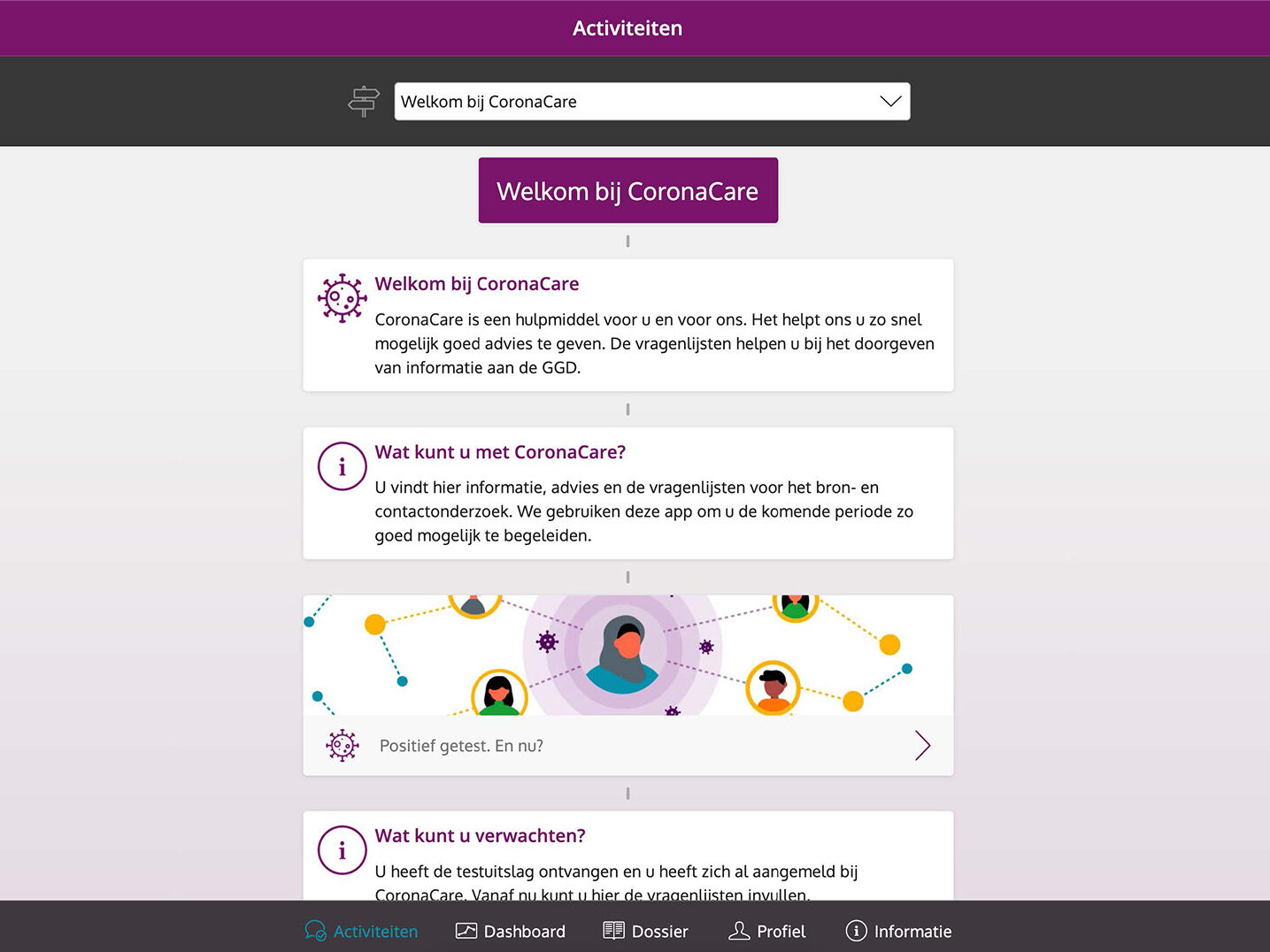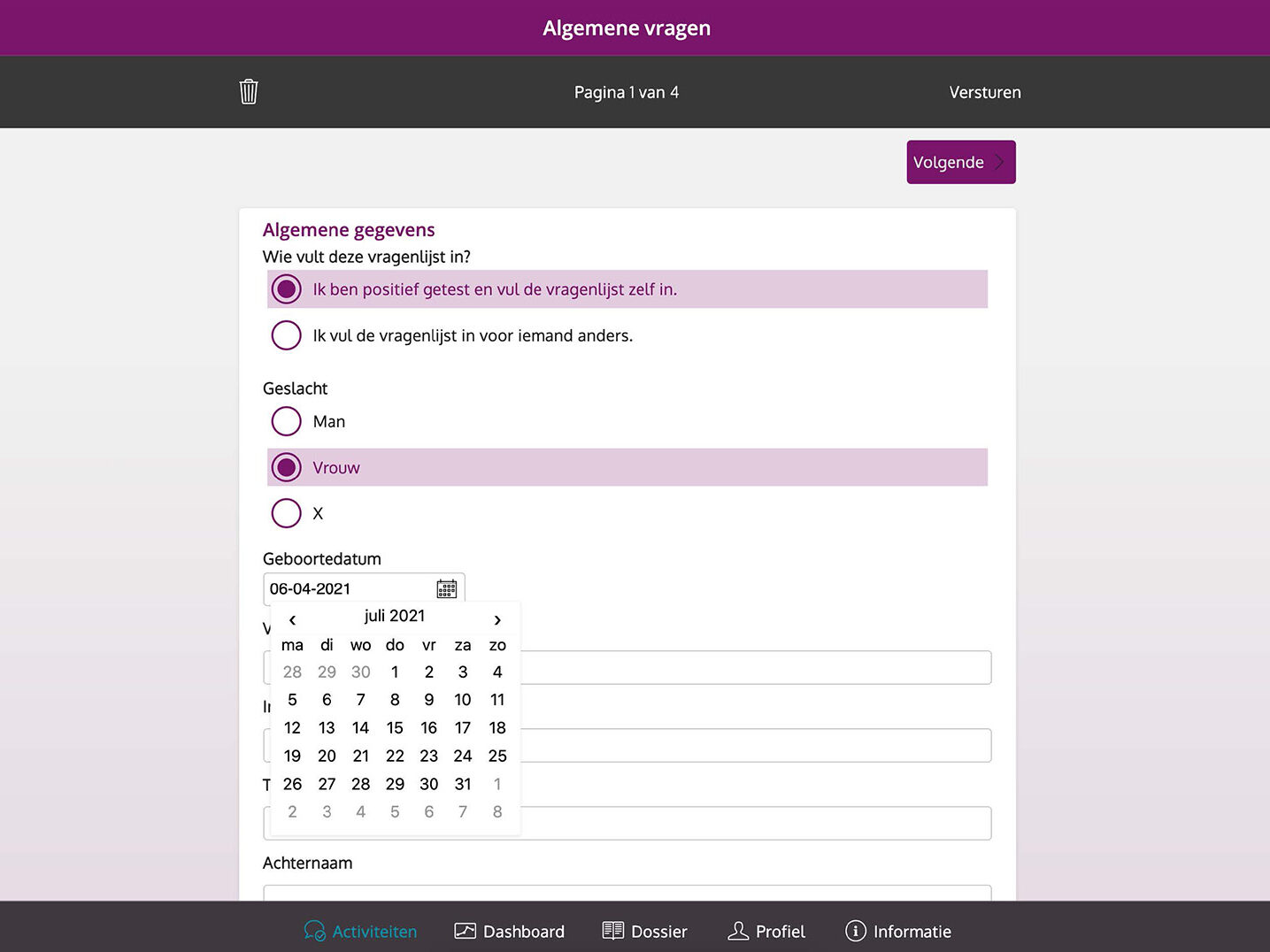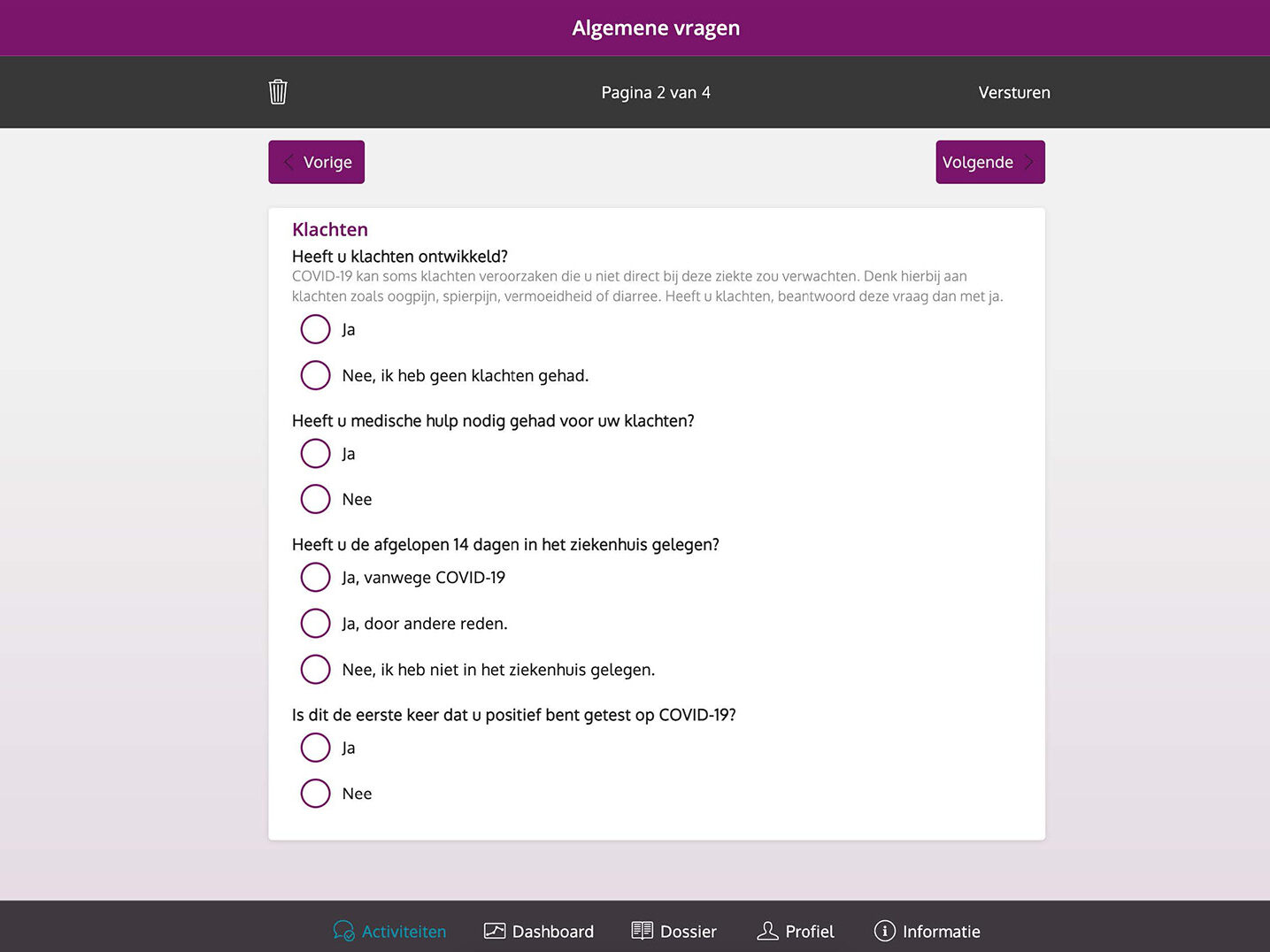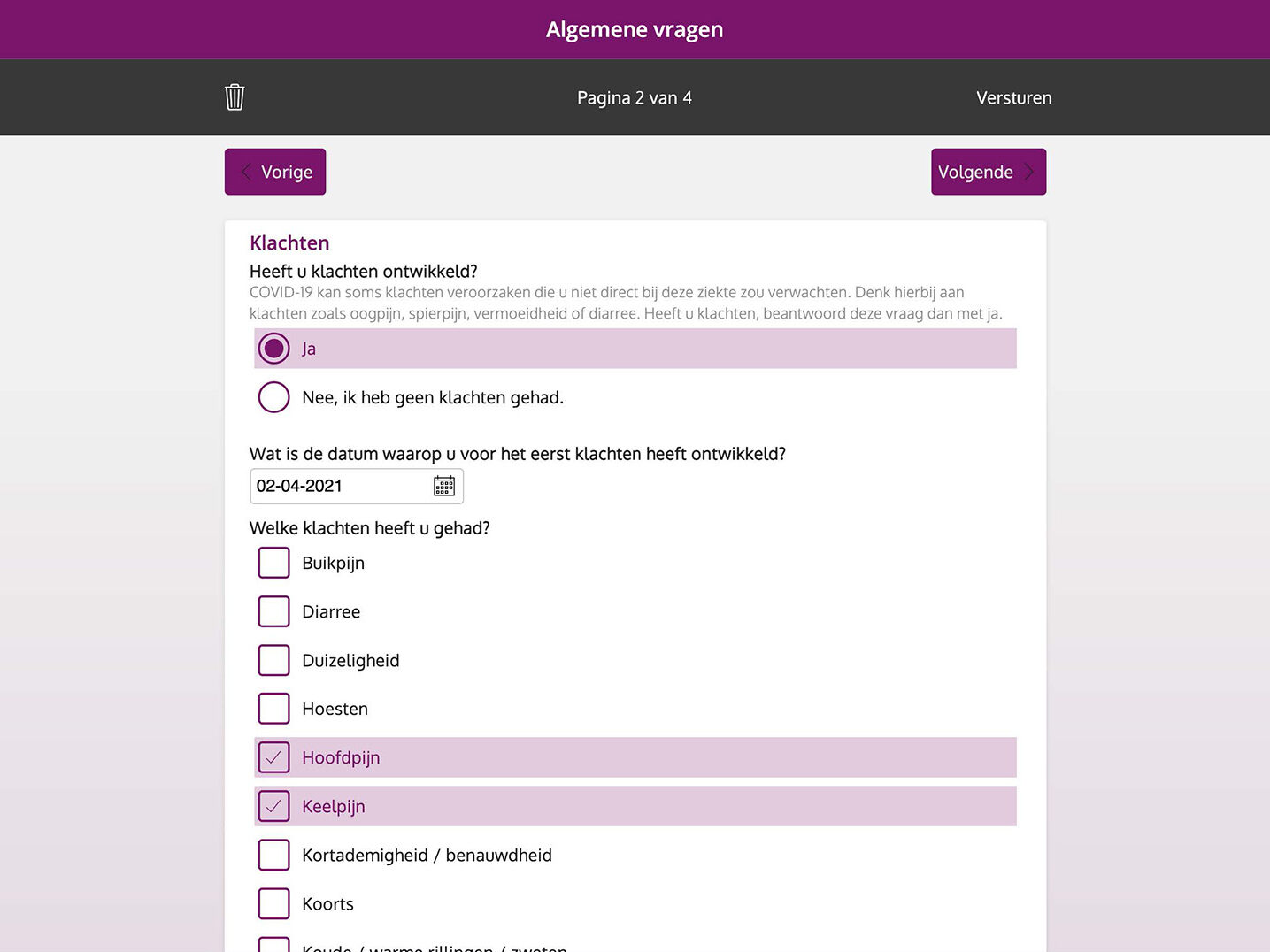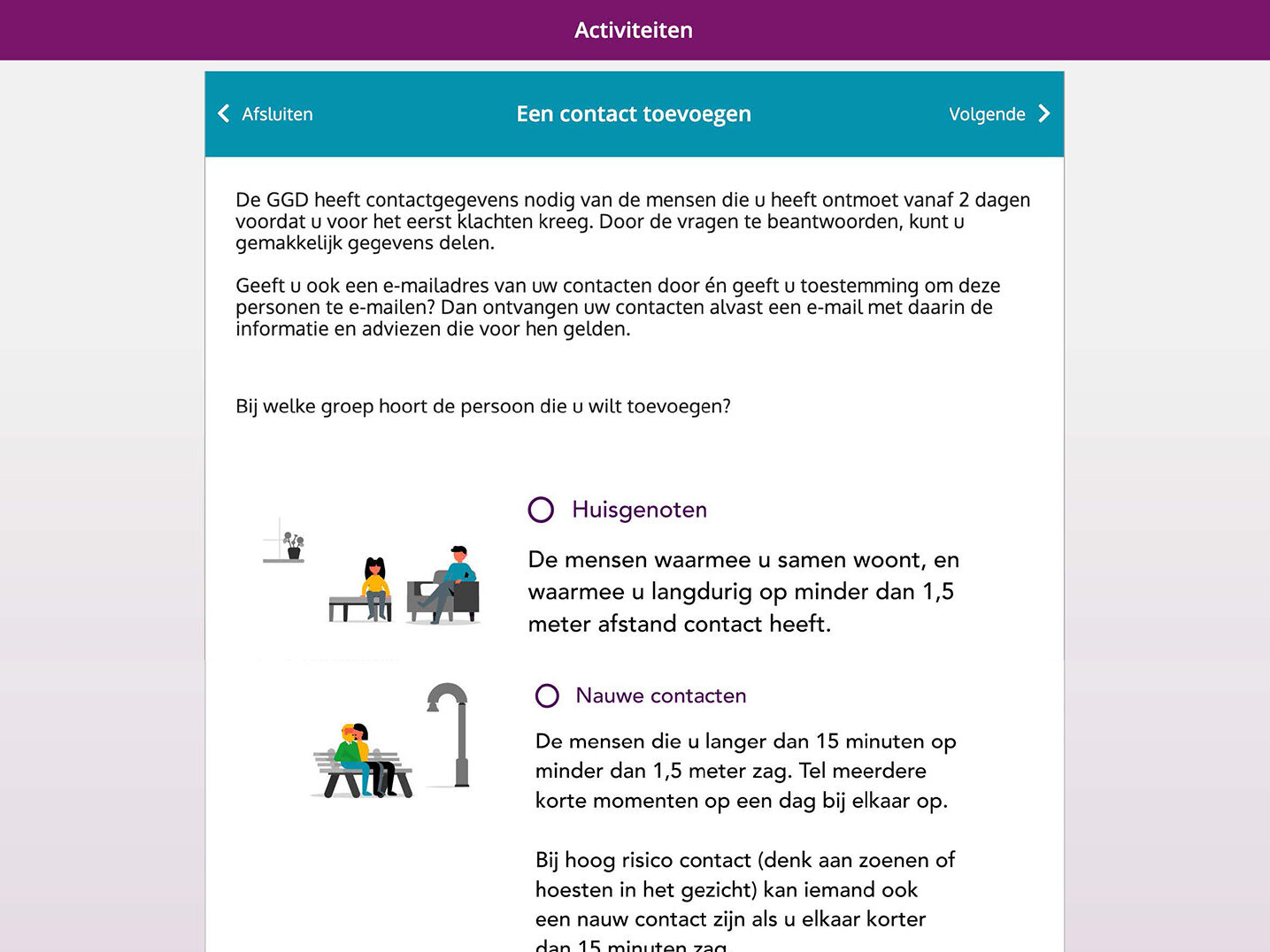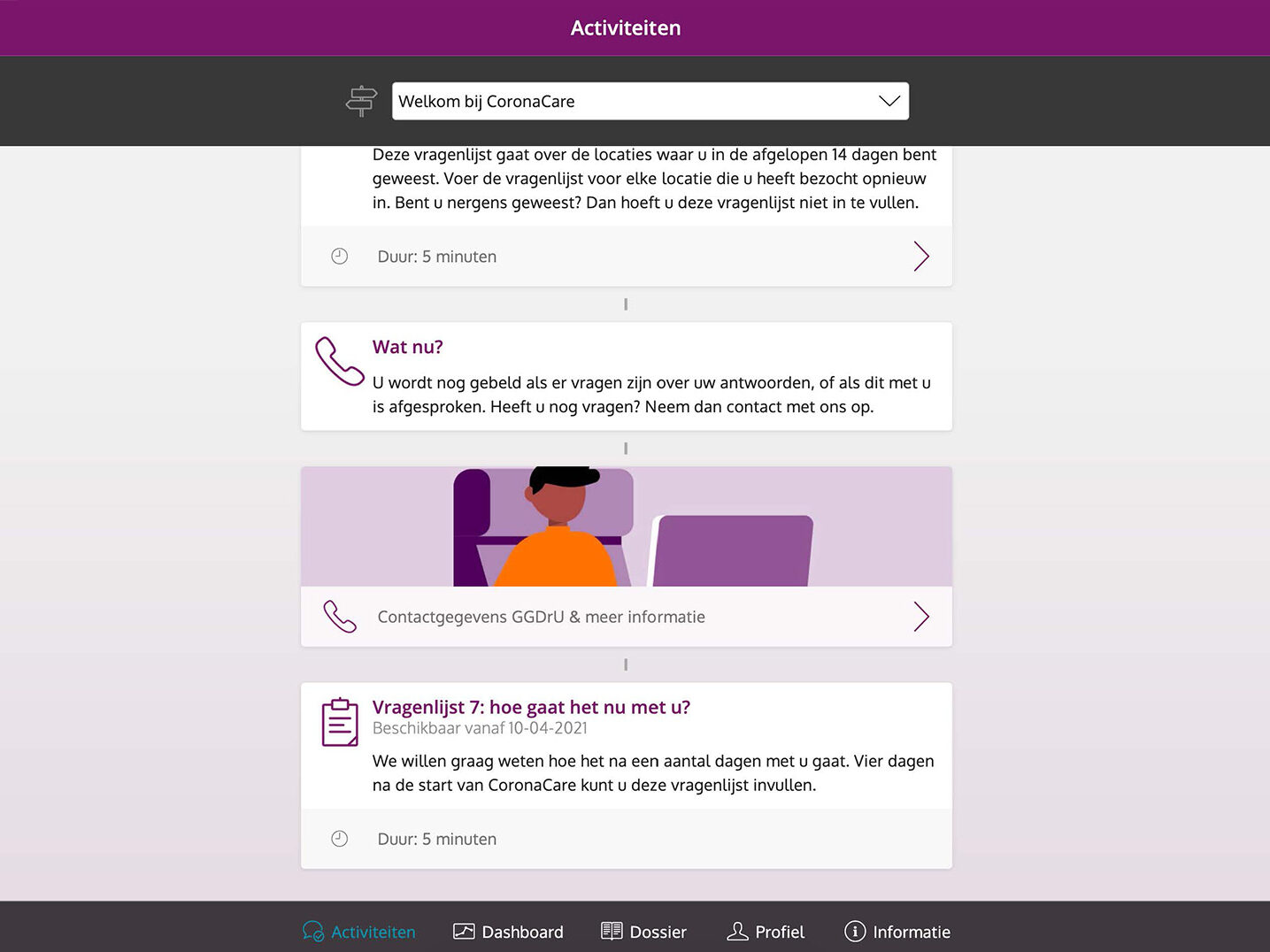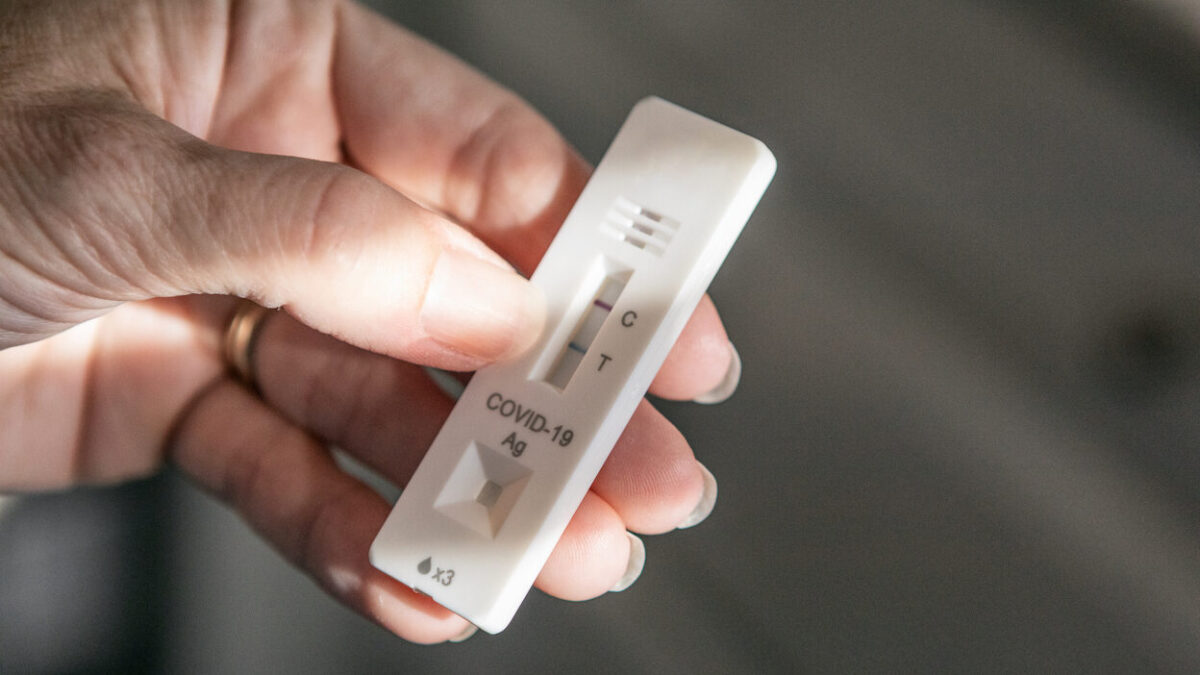
How we reduced GGD’s administration burden from 8 to 2 hours for COVID-19 contact tracing
About the client
GGD is the Public Health Service in the Netherlands, and during the pandemic, GGD was responsible for COVID-19 contact tracing after testing positive for coronavirus. Contact tracing can break the chains of transmission through the rapid identification, isolation and clinical care of cases and providing supported quarantine of contacts, meaning that virus transmission can be stopped.
GGD (Public Health Service) region Utrecht focuses on preventing disease, protecting, monitoring and promoting public health and the living environment of 1.3 million inhabitants in the Utrecht region.
The collaboration came together during the pandemic when GGD region Utrecht asked to help with contact tracing for COVID-19 as it was one of the largest areas in the Netherlands with COVID-19 infections.
The challenge
Before the implementation of our solution, GGD had a manual contact tracing system for COVID-19. When a person had tested positive for COVID-19, the GGD call centre team would contact the infected person by phone, interview them to ask various questions regarding the symptoms they had experienced and who they had been in contact with and provide quarantine instructions and other relevant information.
After that, the infected patient contacts were called and had to do the same procedure. All the information was manually added to their legacy electronic health record. The management of one interview, therefore, could take 4-8 hours. This, of course, was very time-consuming both for the call centre staff and for the patient. It also was very error-sensitive, as the information was manually being filled in and managed in their legacy EHR.
With 300 infected patients per day and 200 call centre employees, it was possible to conduct 200-400 cases daily, resulting in a huge administration backlog.
The solution
We created an online client pathway for GGD that simplified the process of getting contact tracing information, reduced the administration burden and improved the overall patient experience.
After the patient is tested positive by doing an official COVID-19 test at GGD, the flow is activated:
- GGD calls infected patients to check the correctness of their basic information
- After that, they receive an email with instructions regarding registration and information about the questionnaires.
- The patient registers for the patient environment (coronacare.ggdru.nl) that is secured Two-Factor Authentication to ensure extra safety of the sensitive patient data.
- After logging in, they have an overview of all questionnaires. There are, in total, five questionnaires:
- General questionnaire
- Contact tracing questionnaire
- Location questionnaire
- Contact information questionnaire
- Follow-up questionnaire
- For patients who didn’t register or fill out a questionnaire, there is a daily reminder system through notifications received per e-mail.
- For patients who are not able to use the computer, GGD staff offered phone support, whereby they filled out the questionnaires in the environment together with the patient.
Our solution fully integrated with the legacy EHR of GGD to ensure all important information was filled out through questionnaires and logged into their system. This way, it was possible to have an overview of all patient information in one place, making it much more workable for the staff by saving their valuable time.
Highlighted features
CoronaCare App
Various Questionnaires within Patient App
Patient Journey Management
Export infected patients information via Sharepoint/PDF
GGD Branded (visual style)
The impact
With this system in place, GGD received all the data into interactive Insights dashboards and, therefore, could view the infected patient results of that particular region, which made it easy to understand where the most infected people were. The solution also significantly helped reduce the time spent per case, and the amount of staff needed, reducing overall cost.
300 vs 300
Infections a day
4-8h vs 2h
Time spent per case
200 vs 150
Amount of call center employees
200-400 vs all
Cases completed
Would you like to turn your data into better healthcare?

